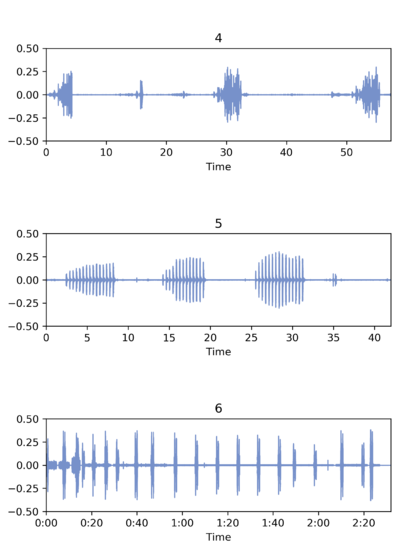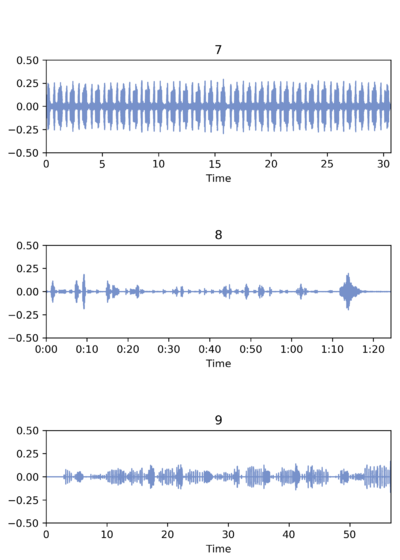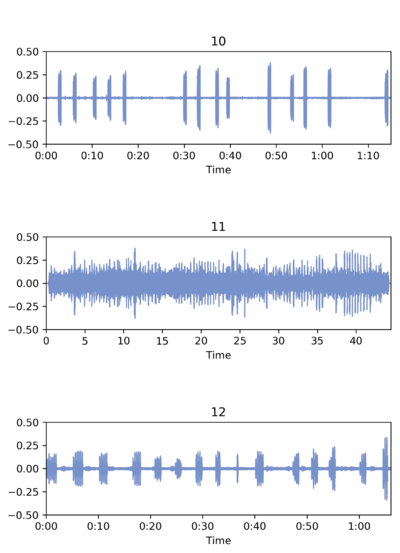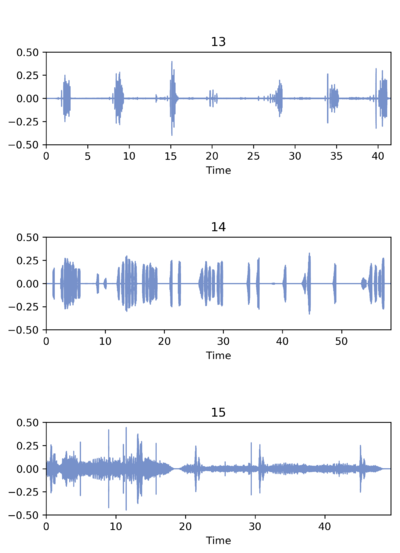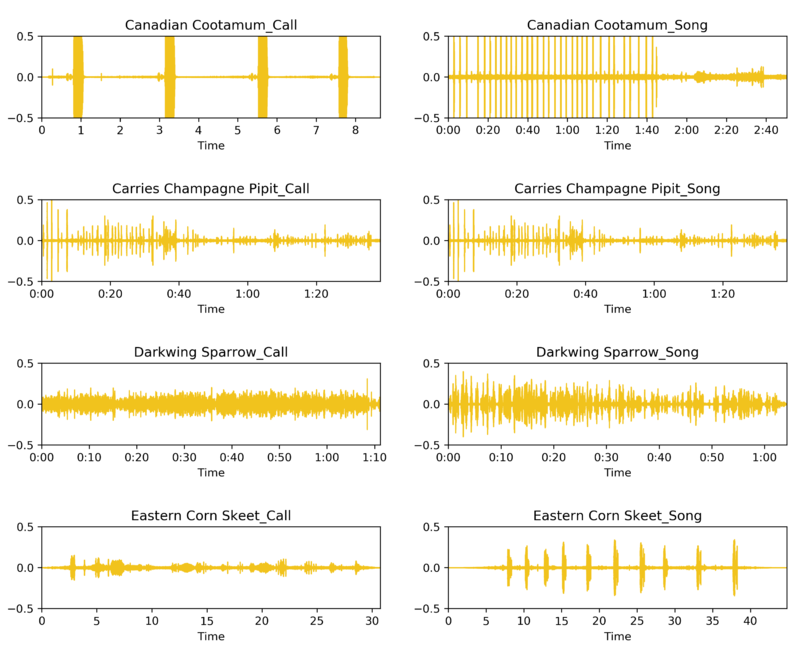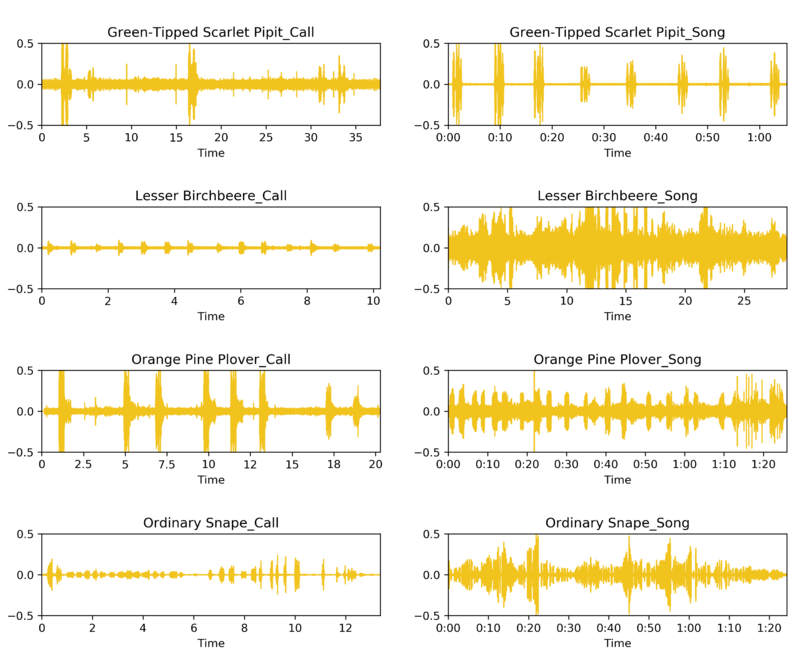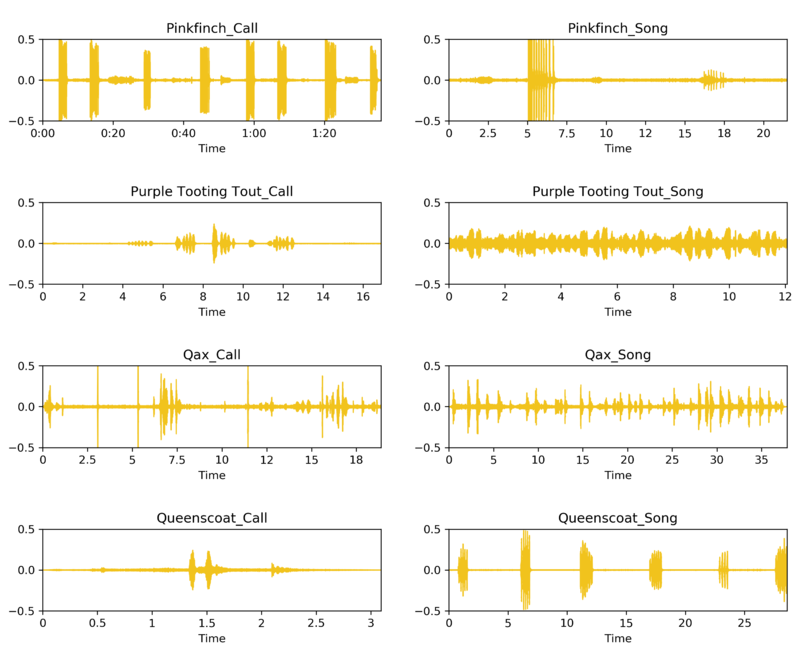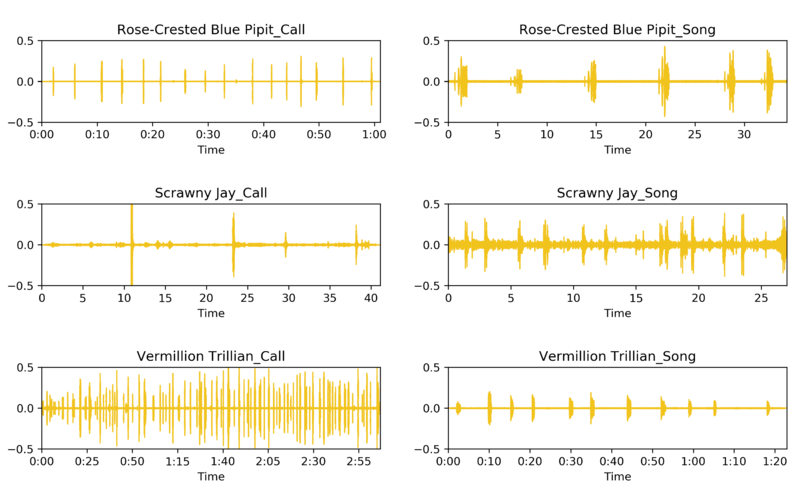Difference between revisions of "ISSS608 2017-18 T3 Assign Jiang Yilin Answers"
| Line 54: | Line 54: | ||
Since all the test audios has range inside [-0.5,0.5], and so is blue pipits sample audio(both call and song), I set the sample file to the same range. In this way, it automatically excludes many audios when matching them against the test audios.<br><br> | Since all the test audios has range inside [-0.5,0.5], and so is blue pipits sample audio(both call and song), I set the sample file to the same range. In this way, it automatically excludes many audios when matching them against the test audios.<br><br> | ||
| + | {| class="wikitable" | ||
| + | |- | ||
| + | ! Test Audio | ||
| + | ! Sample Audio | ||
| + | |- | ||
| + | | [[File: Test01.png|400px]] | ||
| + | [[File: Test02.png|400px]] | ||
| + | [[File: Test03.png|400px]] | ||
| + | [[File: Test04.png|400px]] | ||
| + | [[File: Test05.png|400px]] | ||
| + | | [[File: Sample01.png|800px]] | ||
| + | [[File: Sample02.png|800px]] | ||
| + | [[File: Sample03.png|800px]] | ||
| + | [[File: Sample04.png|800px]] | ||
| + | [[File: Sample05.png|800px]] | ||
| − | + | |} | |
| − | + | ||
| − | + | Of all the test audios, 13 is most likely to be Rose pipit singing, and 6 is likely to be Rose pipit calling. Other audios show no similarity with either rose pipit singing or calling. | |
| − | + | <br> | |
| − | + | [[File: Kasio.png|500px]] | |
| + | |||
| + | Above is the plot for location of 15 birds collected by Kasios company. From the audio visualization. Only 6 and 13 are audios of Rose Pipit. And the singing one(13) is further away from the dumping site than the calling one(6). | ||
Revision as of 13:42, 9 July 2018
|
|
|
|
|
Q1. Is there any trend or anomaly?
Starting from the first question raised before (whether the population of rose pipits is declining), we can derive the conclusion from Viz.1 that the Blue pipit's population is declining in fact.
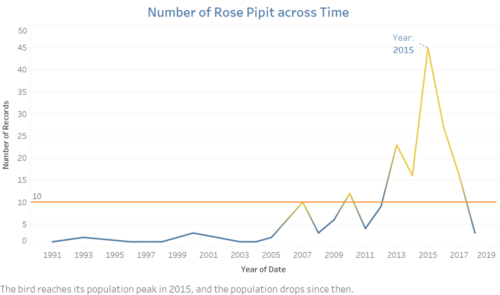
From the graph,it's clear that the bird reaches its population peak in 2015, and the population drops since then.
Now, what about other species' population?
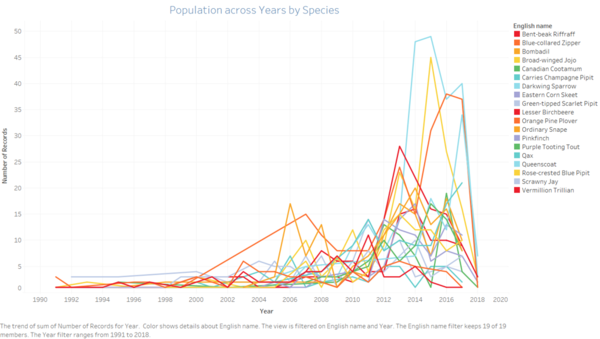
As shown by Viz.2, most of other species also have population decline since 2015 and 2016, some since 2014. For specific info please check the published story.
Geographical Visualization for all birds, Rose-crested blue pipits, Green-tipped Scarlet Pipit, and Eastern Corn Skeet. The last two species are two most active species besides Rose pipits.
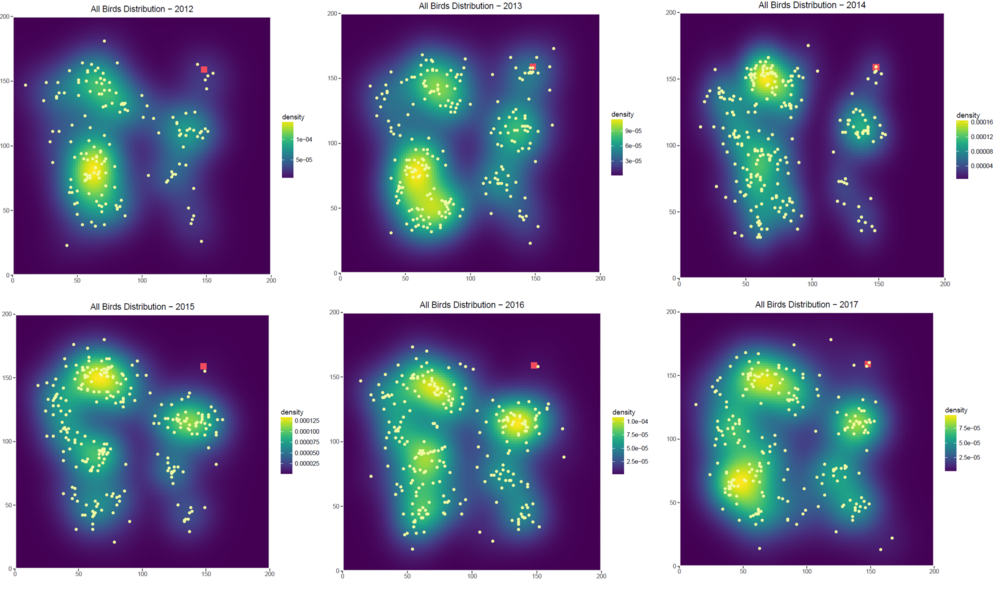
From All birds distribution, there used to be birds active around the dumping site in 2012-2014, the peak is in 2013. However, since 2015, birds become very scarce around the site. Another point is that the density dropped from e-4 to e-5 in 2017, which resonates with Viz.2.
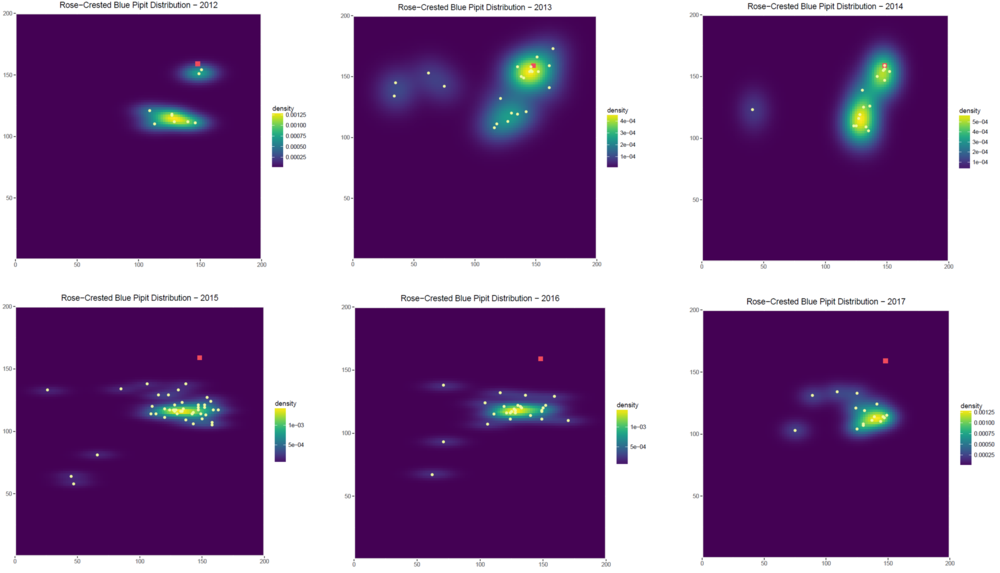
The movement of rose pipit is even more obvious than the all birds distribution. In 2012-2014, there were many rose pipits active around the site. There are two clusters of them, one around the dumping site, and another cluster below that. But from 2015, there is only one cluster, the cluster around dumping site disappeared.
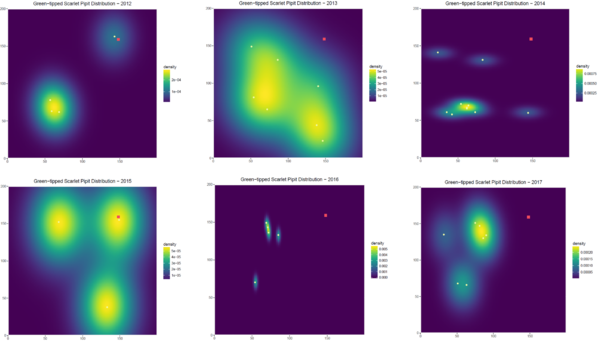 ....... .......
....... .......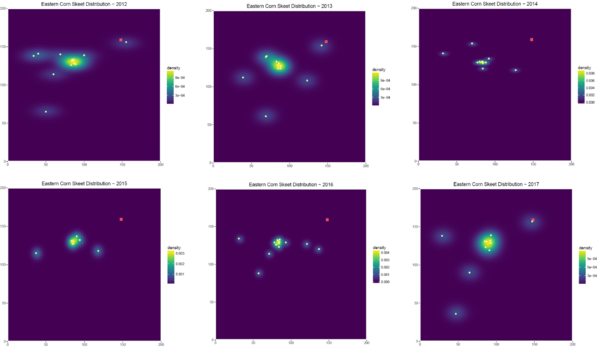
Green pipits(left) and Eastern Corn Skeet(right) also shows some signs of getting away from the site in 2016 and 2017, but since the population is small and changes are not very obvious, here we cannot make the conclusion that the dumping site is affecting all birds.
Q2. Are the sounds that Kasio company provided really Rose-crested Blue Pipits?
Using librosa package from python, I generated visualized audio waves for the 15 audios given by Kasios company(test file) and the audio package provided by the university(sample file).
The university bird audio package has 2081 files. Since birds have different sounds for call and song, randomly select one call audio and one song audio for each species. All sample file selected are of A or at least B quality, to avoid noise interference and make sure of the waveplot accuracy.
Since all the test audios has range inside [-0.5,0.5], and so is blue pipits sample audio(both call and song), I set the sample file to the same range. In this way, it automatically excludes many audios when matching them against the test audios.
| Test Audio | Sample Audio |
|---|---|
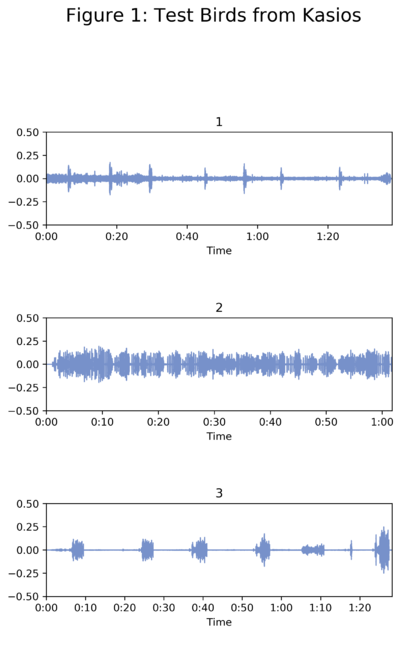
|
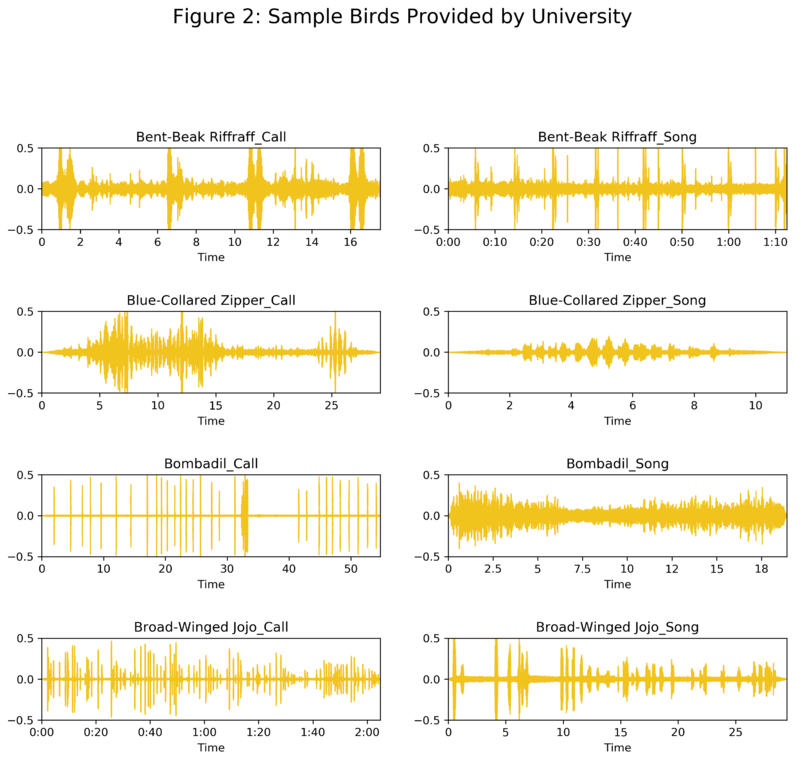
|
Of all the test audios, 13 is most likely to be Rose pipit singing, and 6 is likely to be Rose pipit calling. Other audios show no similarity with either rose pipit singing or calling.
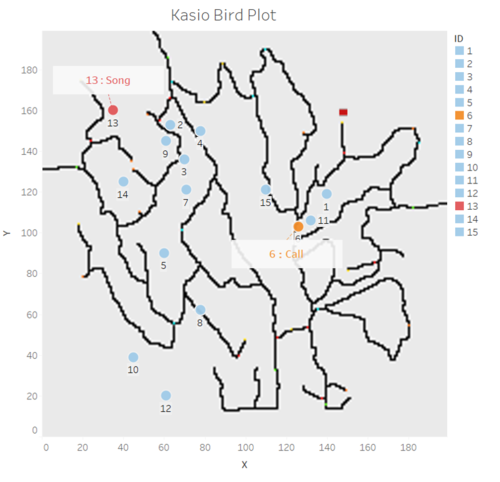
Above is the plot for location of 15 birds collected by Kasios company. From the audio visualization. Only 6 and 13 are audios of Rose Pipit. And the singing one(13) is further away from the dumping site than the calling one(6).

